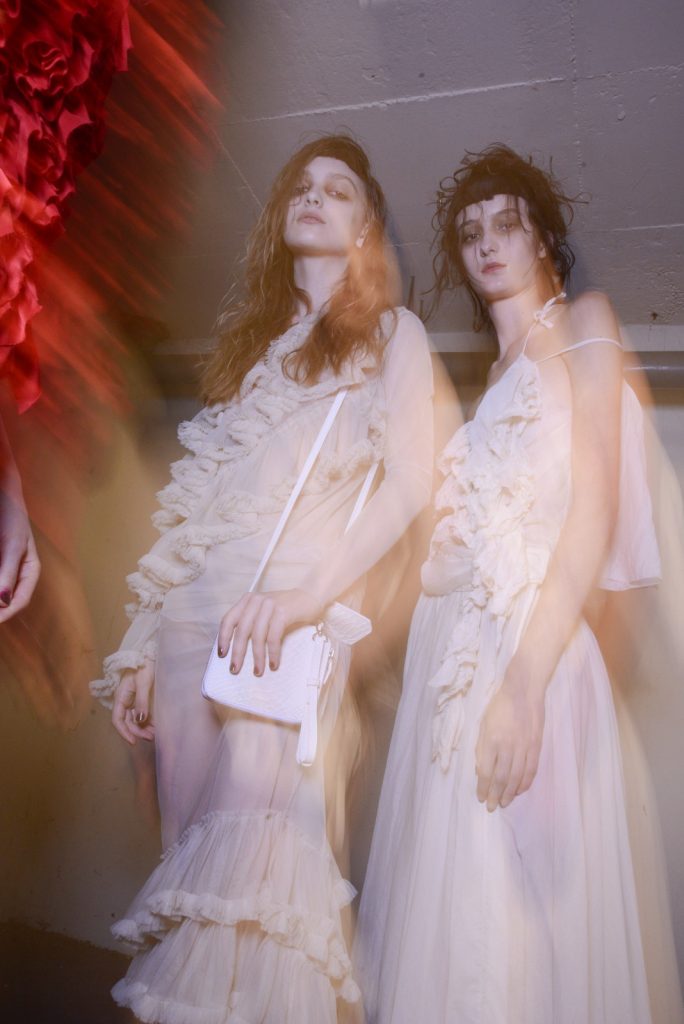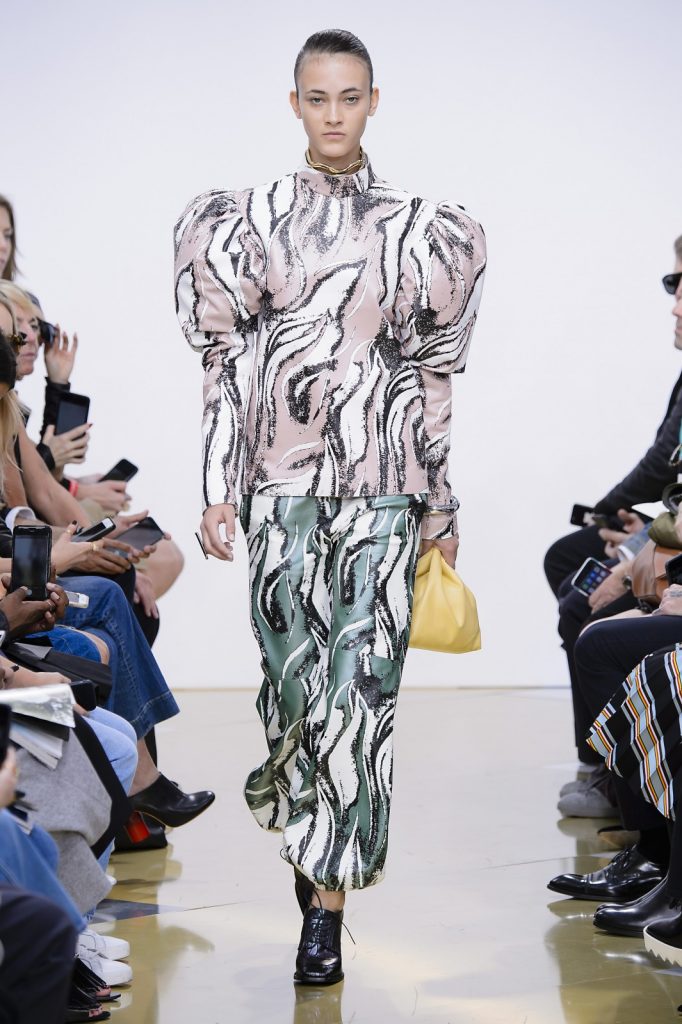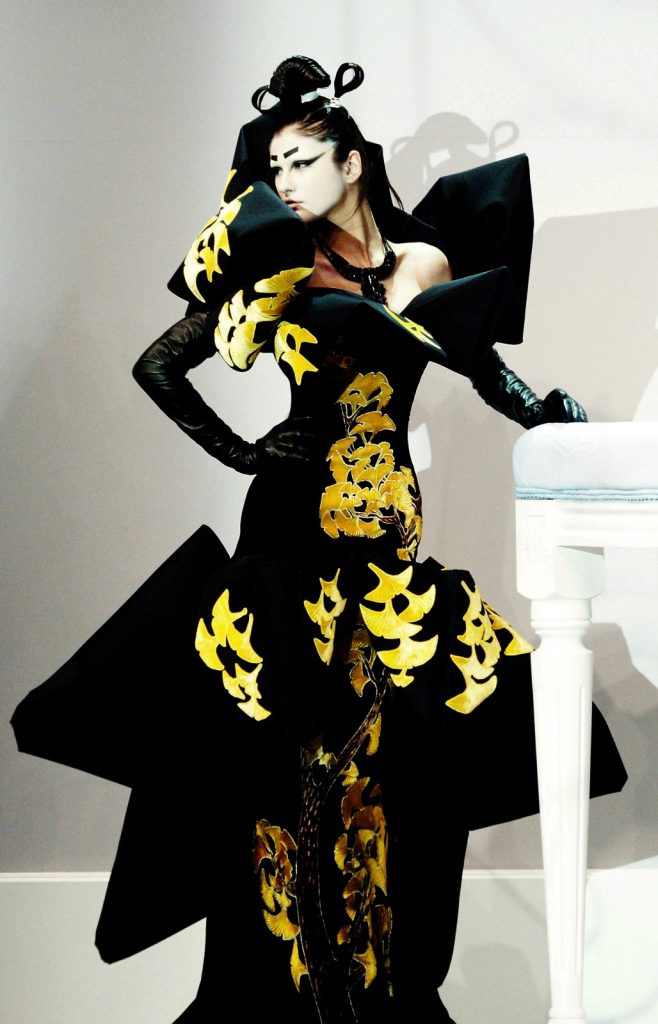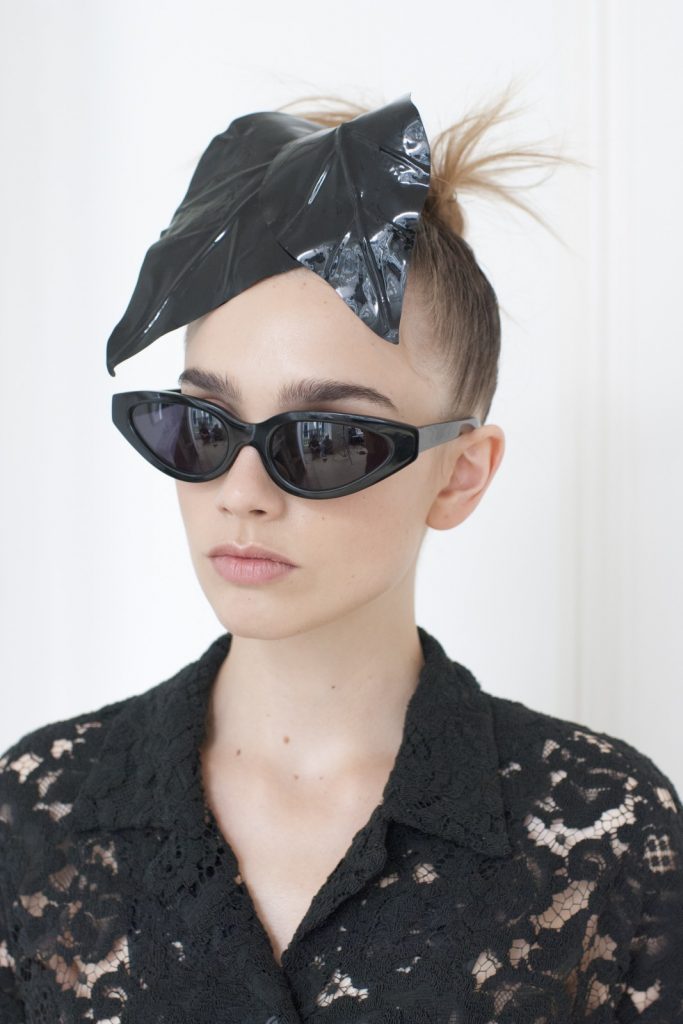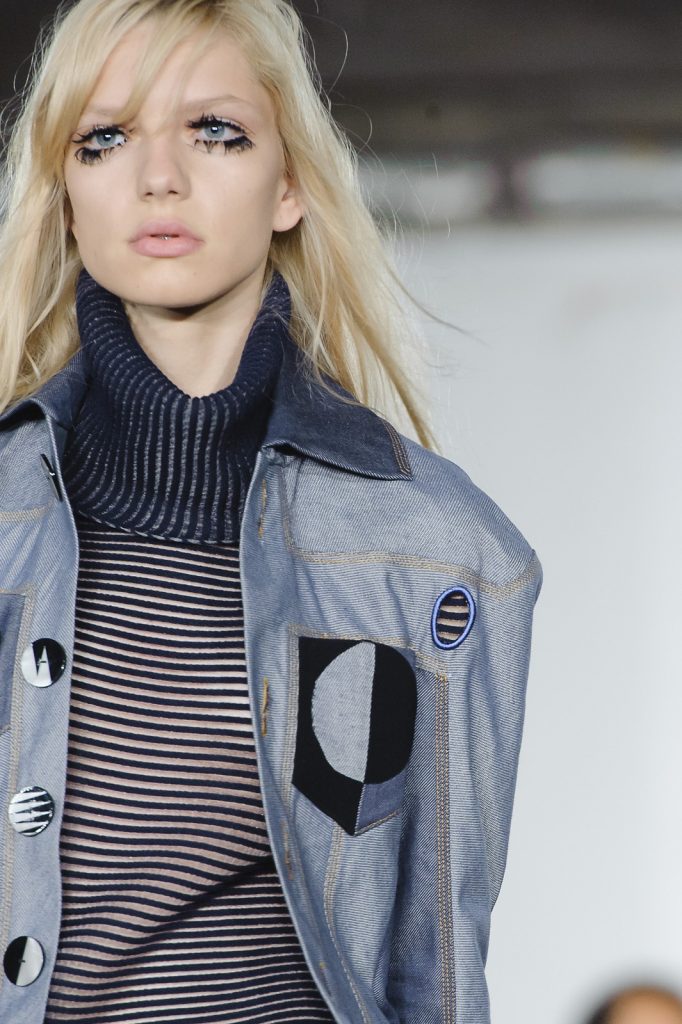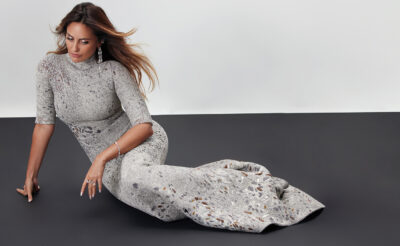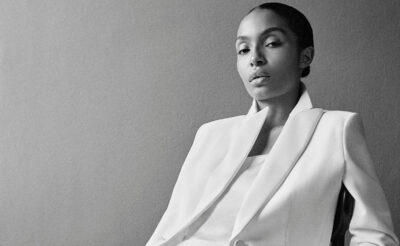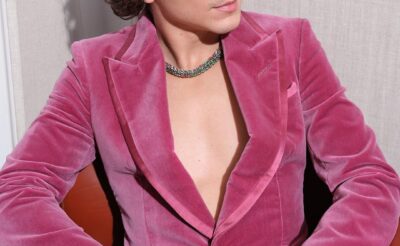Overblown theatrics, giant sculptural forms and conceptual complexities were once the identifiers of avant-garde fashion. But, is it the only way? In MOJEH Issue 35 we explored a new wave of radicals, who are taking a fashion road less travelled.
Rei Kawakubo, Martin Margiela, Hussein Chalayan, Viktor Horsting and Rolf Snoeren are all considered masters of the avant-garde. For decades, these designers have combined artistry, wit and craftsmanship with breathtaking spectacle. But, fashion continues on its quest for the new. Taking up the experimental mantle is a generation of designers without boundaries, self-consciousness or obligation: Simon Porte Jacquemus, Thomas Tait, Jonathan Anderson, Demna Gvasalia of Vetements (a Maison Margiela alumnus) and London duo Marta Marques and Paulo Almeida of Marques’Almeida, who scooped up the latest LVMH prize, to name but a few. “The more emerging designers are the ones who aren’t afraid to experiment as they find their audience and discover their brand DNA,” says buying director at matchesfashion.com, Natalie Kingham. “You also have incredibly sophisticated experimental brands – when I first saw Vetements, for example, the collection resonated with me, as it reminded me of an updated Nineties Margiela. I’m not sure that people initially understood the oversizing and raw edging… your eye has to re-adjust as you are looking at something completely new.” The modern avant-garde rejects much of the flounce or theatricality of years gone by, but these designers are stepping into the ring with their own version of what it means to be ‘avant’ or ahead of their times. The rebels of our future.
The path of the avant-garde is long, revered and ever influential. Concept is king. Look back at Galliano’s couture extravaganzas for Christian Dior Haute Couture in the early Noughties and there’s something feverishly genius and compellingly modern in every dramatic journey from Asia to Russia to ancient Egypt. Kawakubo has questioned convention ever since presenting her very first collection for Commes des Garçons in 1981, culminating in a spring/summer 2016 collection that, in time honoured cryptic style, is a sculptural meditation on Blue Witches (or “powerful women who are misunderstood but do good in the world”), casting its emotionally charged spell over the fashion elite.
“I am a fashion designer and I also work as an artist,” notes Hussein Chalayan. “Ultimately, I’m a curious person and an ideas person. My curiosity permeates everything that I do, therefore I’m inspired by the same things, whether I’m designing a collection or directing a film or creating an sculptural installation. There are recurrent themes in all my work and they all stem from the same ideas.”
Ideas manifest in the garments themselves, but also in the set, the production; the performance that is the avant- garde show. “I always wanted the clothes to be seen in an interesting setting, where part of the inspiration is reflected in a show,” notes Chalayan. “However, although I wanted my audience to have a full cultural experience, sometimes this has worked against me, because maybe these things have detracted people from the craftsmanship of the clothes, which has always been the most important thing for me.”
Ultimately, I’m a curious person and an ideas person. My curiosity permeates everything that I do, therefore I’m inspired by the same things, whether I’m designing a collection or directing a film or creating an sculptural installation.
Hussein Chalayan
Showmanship in today’s climate of studied nonchalance is rarely a concern for the current crop of fashion renegades, but a laser sharp focus on the finer details is always evident. Rigorous technique is housed in the rough; in frayed denim and gargantuan bomber jackets, back-zip dresses that open to reveal themselves as a single piece of fabric and deconstruction that is never precocious. “The industry in general seems more open to experimental designers, who push boundaries and challenge the notion of what is desirable now,” says Serafina Sama, creative director of Isa Arfen. “The appointment of Demna Gvasalia of Vetements as new creative director of Balenciaga is the perfect example. And Jonathan Anderson’s work at Loewe and for his own label is very inspiring. Social media has probably played a crucial role in this phenomenon. A few years ago, when magazines and advertising campaigns were the only channels of communication for fashion brands, it would have been much more difficult for experimental designers to gain such a vast following in such a short time.”
It’s an aesthetic devoid of the obvious markers of excess (crystals, shimmer, animal skins) in favour of artful construction. It’s a case of design beating embellishment. “I love trying to find ways to make volumes look less literal and more abstract. I try to concentrate on volumes rather than on surface decoration and embellishment,” says Sama. “Taking away superfluous elements and making a garment asymmetrical and slightly deconstructed allows me to give a suggestion of a particular mood or feeling without making any reference too literal.”
Tapping into an underground zeitgeist inspired by our endless veneration of youth culture, what’s new and shocking to the mainstream is often categorised as avant-garde, when perhaps it is merely the emergence of a fresh aesthetic that challenges us. “I think that in comparison to a lot of what’s going on right now in fashion, not so avant- garde things might look avant-garde,” Thomas Tait told us in an interview in MOJEH Issue 34. ‘Avant- garde’, ‘street’, ‘alternative’ – whether accurate or not, labels offer a comfort and clarity that can rationalise the unfamiliar.
“In many cases, perhaps because my design process is similar to that of an artist and I can cross over amongst different disciplines, the press over the years have liked to pigeon-hole my collections as being avant-garde,” says Chalayan. “But actually, most of our clothes are quite classic and completely wearable. In fact, most of my time is spent on the commercial side of the collection. With my team I am constantly working on perfecting fit and finishes. Part of the joy of being an independent company is that I design and have a hand on and actually touch every item of clothing we put our name on, which I think is something valuable and unique in this market in which designers are creative directors heading up large design teams and churning out multiple collections per season.”
I don’t like all forms of avant-garde designs, but the designers whose work appeals to me happen to fall into that category. They tend to be crafty material manipulators, who can challenge my view of beauty and gender norms.
Gracia Ventus
It is this artisanal, personal quality, the idea of purchasing a little slice of individualism, that is increasingly encouraging customers to step outside of their fashion comfort zones. These designers offer membership to a club of like- minded revolutionaries, who operate at an artistic level largely beyond the blunt service of commerce, blurring genders, genres and even the nature of a garment. All you have to do is join. “I’ve been watching the progression of Jacquemus and Craig Green over the last few seasons,” says Gracia Ventus of The Rosenrot, a fashion fanatic and wearer of all things experimental. “The former seems to be heavily inspired by Comme des Garçons’ works, in a polished, more palatable way. Craig Green makes wonderful garments that transcend the east vs. west fashion dialogue. There’s also Faustine Steinmetz who makes beautiful denim garments, which I love, despite my hate for denim in general. Her works have paved the way for the denim manipulations we are seeing today, like that of Marques’Almeida. In terms of leather, Martina Spetlova is still ahead of the pack, and deserves more recognition for her research.”
Insiders like Daphne Guinness, the late Isabella Blow, Anna Della Russo, Lady Gaga and newcomers such as Ventus are paid up members of the vanguard, reveling in the notoriety this style of dressing entails, but also, at its heart, with a deep appreciation for the skill, technique and artistic meaning in every piece. “These are brands that play with different volumes, textures and fabrics to create something unique and artistic,” explains Kingham. “A brand like Marques’Almeida, which specialises in soft twill denim, silks and brocade with raw edges: They have become known for experimenting with different layers, pleats and shapes, which our customers love as much as we do. They respond well to brands that have a point of difference, like Ellery, Isa Arfen, Vita Kin, Vetements, Joshua Sanders and Wales Bonner.”
Wearing them becomes a personal statement of intent. “When you see avant-garde fashion in a museum, you say loudly, ‘Who would wear that?’ It elicits a real and visceral response because of the medium,” says Ventus. “I don’t like all forms of avant-garde designs, but the designers whose work appeals to me happen to fall into that category. They tend to be crafty material manipulators, who can challenge my view of beauty and gender norms.” The downside of a penchant for the eclectic? “It’s not cheap,” remarks Ventus wryly.
Building a loyal tribe of customers is all about being mindful of finding a consumer with a similar taste level, according to Kingham, but there are unavoidable commercial factors at play, too, particularly for those designers appealing to a niche following. “I think all young designers face similar struggles,” notes Sama, “having to meet production deadlines to deliver orders on time, managing cash flow, keeping prices reasonable without compromising on quality, and a lot of multitasking for very small teams.”
“I think there’s a huge amount of cheerleading that happens in the industry, where they take young people and they celebrate them and advertise them in the media and write a lot of articles about them, but very few people are asking questions about the business: How it actually works and what it means to them on a daily basis and how they might struggle,” Tait cautions. Between the LVMH prize, the International Woolmark prize, NEWGEN and CFDA support, there are glimmers of financial hope on the radar of the lucky few. Real stability, however, comes from securing key retail partners and independent long term financing. “We work closely with a lot of emerging designers,” says Kingham,“supporting them from the early days to ensure they grow into successful and established brands. Not only do we advise them on a practical level, such as range planning and production, but we support them editorially.”
Neither anti-fashion nor anti-luxury, this crop of new labels is changing the way we view fashion. “Avant-garde designers have been and always will be the key influence on the industry,” notes Ventus. “That’s why they were called avant- garde,” she says, citing Christian Dior and Commes des Garçons as pioneers. “Being ahead of their time, they were rejected at first then embraced by the wider population, who would hardly know of the provenance of prevailing trends.” History has a habit of repeating itself. The iconoclastic delirium of the avant-garde of the past few decades may be a distant memory, but in its place comes something that offers a beautifully subversive alternative.
